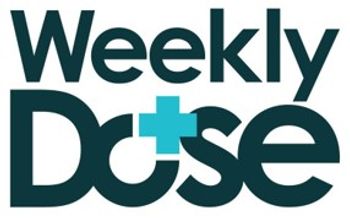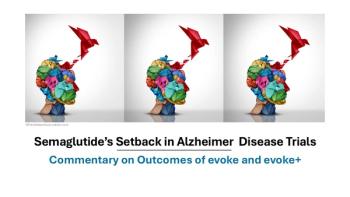
Natalizumab (Tysabri) Reduces Vision Loss in MS
PHILADELPHIA -- Natalizumab (Tysabri), which reduces relapse rates in patients with relapsing multiple sclerosis, also prevents vision loss, researchers here say.
PHILADELPHIA, April 17 -- Natalizumab (Tysabri), which helps patients with relapsing multiple sclerosis, also prevents vision loss, according to researchers here.
In two large phase III trials, the risk of clinically significant vision loss was significantly reduced for patients getting natalizumab, found Laura Balcer, M.D., of the University of Pennsylvania and colleagues.
The international AFFIRM and SENTINEL trials, which enrolled a total of 2,138 patients, were the first to include a measure of visual acuity as an endpoint, they reported in the April 17 issue of Neurology.
"Not only does natalizumab prevent the worsening of vision loss in people with relapsing MS, we also found the drug was associated with significant reductions in the likelihood of sustained vision loss," Dr. Balcer said.
Natalizumab, a monoclonal antibody, was approved by the FDA in 2004 to treat relapsing MS. It was withdrawn temporarily after three cases of progressive multifocal leukoencephalopathy developed in patients in the clinical trials, but was re-approved for restricted use by the FDA in June 2006.
The AFFIRM and SENTINEL studies both compared natalizumab with placebo, although in the SENTINEL trial patients were also taking interferon-beta1a, the researchers said.
In both trials, investigators measured visual acuity using three eye charts - a high-contrast (100%) chart, as well as two low-contrast charts (at 2.5% and 1.25%, respectively.)
Patients had their eyes tested every 12 weeks and a clinically significant loss of acuity was defined as a two-line worsening of acuity sustained over 12 weeks.
The high-contrast chart is the black-and-white model used to test sight by many clinicians, but the low-contrast charts are a model of day-to-day visual acuity needed for such things as mobility, facial recognition, and driving, Dr. Balcer and colleagues said.
In fact, there was no significant difference in visual acuity between treatment arms in either trial when patients were tested on the high-contrast chart, the researchers found.
However, over 120 weeks, patients getting natalizumab did significantly better on the low-contrast charts, they said.
Specifically, in the AFFIRM trial:
- The risk of clinically significant loss of acuity was reduced by 47% at the 2.5% contrast level, compared to placebo patients. The hazard ratio was 0.53, with a 95% confidence interval from 0.36 to 0.76, which was significant at P<0.001.
- The risk was reduced by 35% at the 1.25% contrast level. The hazard ratio was 0.65, with a 95% confidence interval from 0.47 to 0.90, which was significant at P<0.008.
In the SENTINEL trial, which had an active comparator, significant reductions in risk were only seen at the 1.25% contrast level, where the risk of vision loss was reduced by 28%. The hazard ratio was 0.72, with a 95% confidence interval from 0.54 to 0.98, which was significant at P<0.038.
Both studies showed a reduced risk of sustained worsening over a six-month period, the researchers said.
In AFFIRM, the hazard ratio for sustained worsening, measured at the 2.5% contrast level, was 0.49 in favor of the natalizumab arm. The hazard ratio was 0.49, with a 95% confidence interval from 0.29 to 0.83, which was significant at P<0.008.
In SENTINEL, measured at the 1.25% level, the hazard ratio was 0.54 in favor of natalizumab. The hazard ratio was 0.54, with a 95% confidence interval from 0.36 to 0.81, which was significant at P<0.003.
As well as showing that drug reduces the risk of vision loss, "the results provide strong validation for a simple, sensitive, cost-effective, and clinically meaningful measure of visual function in MS," said Nicholas LaRocca, Ph.D., of the National MS Society.
Newsletter
Enhance your clinical practice with the Patient Care newsletter, offering the latest evidence-based guidelines, diagnostic insights, and treatment strategies for primary care physicians.















































































































































































































































































